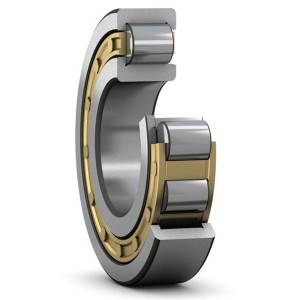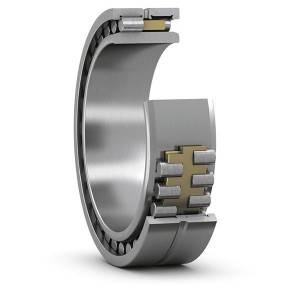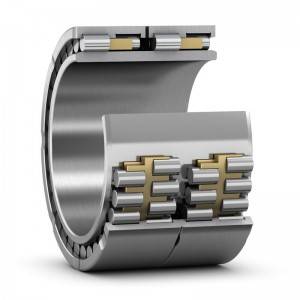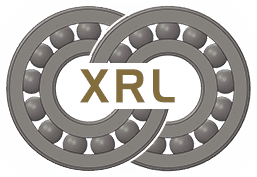In the world of modern machinery and engineering, ball and roller bearings play a pivotal role in ensuring the smooth operation of countless mechanical systems. From automobiles and industrial machinery to household appliances and aerospace technology, these bearings reduce friction and wear, supporting rotational or linear movements with precision and reliability. Xinri Bearing, a leader in bearing manufacturing, stands at the forefront of this industry, driving production excellence and innovation to meet the growing demands of various sectors. This article explores the significance of ball and roller bearings, the manufacturing process behind these critical components, and how Xinri Bearing is leading the way in quality and innovation.
The Importance of Ball and Roller Bearings
Ball and roller bearings are essential components in any machine that requires rotational or linear movement. Their primary function is to reduce friction between moving parts, allowing for smoother operation, reducing wear, and increasing the efficiency of the machinery. Bearings are found in a vast array of applications, including automotive engines, industrial equipment, medical devices, and consumer electronics.
Key Functions of Bearings:
- Load Bearing:
Bearings support the weight of the components they connect, allowing them to rotate or move smoothly without undue wear and tear. - Reducing Friction:
By reducing friction between moving parts, bearings help to increase the efficiency of machinery, leading to lower energy consumption and longer service life. - Maintaining Alignment:
Bearings help maintain the alignment of rotating components, ensuring that they move in the correct direction and reducing the risk of mechanical failure. - Speed Control:
Bearings enable components to rotate at high speeds with minimal friction, which is crucial in applications such as high-speed engines and turbines.

Types of Bearings: Ball vs. Roller Bearings
While both ball and roller bearings serve similar purposes, they differ in their design and specific applications.
1. Ball Bearings:
Ball bearings are the most common type of bearing and are characterized by their rolling elements, which are small balls made from metal or ceramic. These bearings are designed to handle both radial and axial loads, making them versatile for a wide range of applications.
Advantages:
- Versatility:
Suitable for both radial and axial loads. - High-Speed Performance:
Excellent for applications requiring high rotational speeds. - Low Friction:
Reduced friction leads to higher efficiency and less wear.
Applications:
Automotive engines, electric motors, household appliances, and aerospace components.
2. Roller Bearings:
Roller bearings differ from ball bearings in that their rolling elements are cylindrical, taper, or spherical rollers rather than balls. These bearings are designed to handle heavier loads and are typically used in applications where high radial loads are prevalent.
Advantages:
- Load Capacity:
Higher load-bearing capacity compared to ball bearings. - Durability:
Better suited for applications involving heavy loads and high-impact conditions. - Long Service Life:
Less prone to deformation under load, leading to longer operational life.
Applications:
Industrial machinery, heavy-duty vehicles, construction equipment, and railways.

The Manufacturing Process of Bearings
The manufacturing of ball and roller bearings is a highly specialized process that requires precision engineering, high-quality materials, and advanced technology. Xinri Bearing employs state-of-the-art manufacturing techniques to produce bearings that meet the highest standards of quality and performance.
1. Material Selection:
The first step in bearing manufacturing is selecting the appropriate materials. High-carbon chrome steel is commonly used for the rolling elements and raceways due to its hardness and durability. In some applications, ceramic or hybrid materials are used to enhance performance, especially in high-speed or corrosive environments.
2. Forging and Shaping:
The selected material is forged into rough shapes for the bearing components. For ball bearings, this involves creating the balls, while for roller bearings, cylindrical or tapered rollers are formed. The raceways, which are the surfaces that the rolling elements move against, are also shaped during this stage.
3. Precision Grinding:
The forged components are then subjected to precision grinding, a process that ensures the surfaces of the rolling elements and raceways are perfectly smooth and accurate. This step is critical for reducing friction and ensuring the bearing operates smoothly.
4. Heat Treatment:
To enhance the durability and hardness of the bearing components, they undergo heat treatment. This process involves heating the components to a specific temperature and then cooling them rapidly, which increases their resistance to wear and fatigue.
5. Assembly:
After heat treatment, the components are meticulously assembled. The rolling elements are placed between the raceways, and the bearing is sealed to protect it from contaminants. At Xinri Bearing, each bearing is assembled with precision to ensure optimal performance.
6. Quality Control:
Quality control is a vital part of the manufacturing process at Xinri Bearing. Each bearing undergoes rigorous testing to ensure it meets the required specifications for performance, durability, and safety. This includes dimensional accuracy checks, load testing, and noise level assessments.

Xinri Bearing: Leading Production Excellence
Xinri Bearing has established itself as a leader in the bearing manufacturing industry through its commitment to quality, innovation, and customer satisfaction. The company’s state-of-the-art manufacturing facilities and highly skilled workforce ensure that each bearing produced meets the highest standards.
Innovation in Design:
Xinri Bearing continually invests in research and development to innovate and improve bearing designs. This includes the development of new materials, enhanced sealing technologies, and advanced lubrication systems that extend the life of the bearings and improve performance.
Customization and Flexibility:
Xinri Bearing understands that different industries have unique requirements. The company offers a wide range of standard and custom bearings to meet the specific needs of its customers. Whether it’s a high-speed ball bearing for an aerospace application or a heavy-duty roller bearing for industrial machinery, Xinri Bearing provides solutions tailored to each application.
Sustainability and Efficiency:
In addition to quality and performance, Xinri Bearing is committed to sustainability. The company employs energy-efficient manufacturing processes and materials that reduce environmental impact. By optimizing production methods and reducing waste, Xinri Bearing contributes to a more sustainable industry.

Conclusion
Ball and roller bearings are integral to the smooth and efficient operation of countless machines and devices. The precision engineering and high-quality materials used in their manufacture are crucial for ensuring durability, reliability, and performance. Xinri Bearing leads the way in production excellence, offering a wide range of bearings that meet the diverse needs of various industries.
Through continuous innovation, commitment to quality, and a focus on customer satisfaction, Xinri Bearing has positioned itself as a trusted partner for businesses around the world. Whether you are in the automotive, industrial, aerospace, or consumer goods sector, Xinri Bearing provides the expertise and solutions needed to keep your machinery running smoothly and efficiently.
Tags: Roller Bearing , Ball Bearing
Post time: Sep-03-2024
